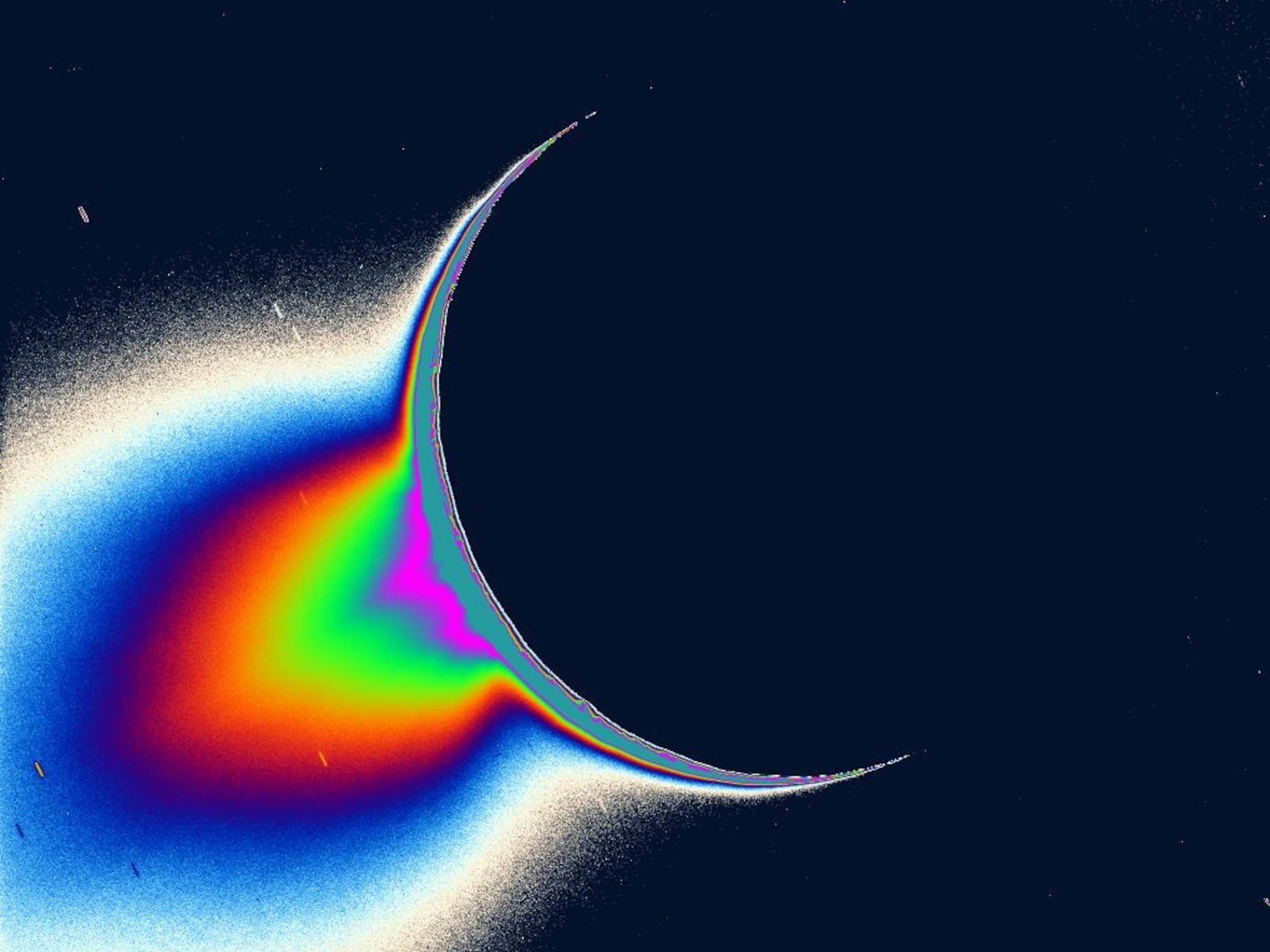Proof Asteroid Crash Made Moon? Solid Evidence Seen in Lunar Rocks
Zinc analysis "fits very well with the giant-impact theory."
Like detectives investigating a 4.5-billion-year-old hit-and-run, scientists have run and rerun scenarios for the moon's origin. Now, zinc evidence may offer some of the best support yet for a leading theory—that a Mars-size asteroid crashed into Earth, littering space with molten wreckage that would coalesce to form our satellite.
(Video: animation of Earth-asteroid collision creating the moon.)
Scientists have long known that, compared with Earth, the moon is much poorer in what study leader Frédéric Moynier calls "moderately volatile" elements such as sodium, potassium, zinc, and lead.
But where did they go? The elements, which evaporate relatively easily at high temperatures, were largely vaporized during the blast, leaving Earth's general vicinity littered with depleted rock that would coalesce to form the moon, the thinking goes.
For the theory to be complete, though, Earth and moon rock should differ not only in the amounts of such elements but also in the weights of their isotopes. Isotopes are variations on a single element that have differing numbers of neutrons. The more neutrons an isotope has, the "heavier" it is, atomically speaking.
(Related: "Moon Water Found' Raises Questions About Origin Theory.")
Heavy isotopes tend to become concentrated after material is partially evaporated—for example when a space rock strikes a planet or when the sun shines on the sea. That's because "when you evaporate any element, the light version of the element goes faster into the vapor," said Moynier, a cosmochemist with Washington University in St. Louis.
When water evaporates from the ocean, for example, the sea surface is enriched with "heavy" oxygen isotopes. Likewise, moon rock should be richer than Earth material when it comes to heavy isotopes of volatile elements
(Also see "Earth, Mars, Moon Have Different Origin, Study Says.")
Zinc Evidence "Fits Well" With Moon Theory
Scientists have been seeking evidence of this imbalance for years, but only recently could they prove it.
Moynier's team accomplished the feat by using ultraprecise mass-spectrometry techniques on zinc extracted from a meteorite and from moon rocks collected from four different lunar sites.
Gauging the zinc isotopes, the researchers turned up "a very small deviation" from Earth rocks, he said. "It couldn't be discovered before, because when the samples were brought back 40 years ago, the instruments were not good enough."
Slight as it is, Moynier added, the relative abundance of heavy zinc isotopes on the moon does indicate a "massive evaporation" of zinc from the rocky material that later formed the moon.
"This," he added, "fits very well with the giant-impact theory."
BREAK
When the smashup theory was first proposed in the 1970s, it seemed exotic, said Matija Ćuk, a planetary scientist at the SETI Institute in Mountain View, California. Since then, giant collisions have become the "bread and butter" of planet-formation theory, he said. Rocky planets and moons, he said, "are put together by taking smaller things and hitting them together." Big, formative fender benders are now "expected to happen."
Harvard planetary scientist Sarah Stewart added that the lunar zinc-isotope information might help refine our understanding of this particular impact. That's because zinc's volatility is dependent on its temperature.
If we could determine the temperatures at which the zinc evaporated, the isotopes could serve as a sort of thermometer
thermometer that gives you the temperature of the [orbital debris disk from which the Moon accreted]. This would be a really useful data point, if that's really the signature it's recording."
The new moon-zinc study was published online Thursday by the journal Nature.





